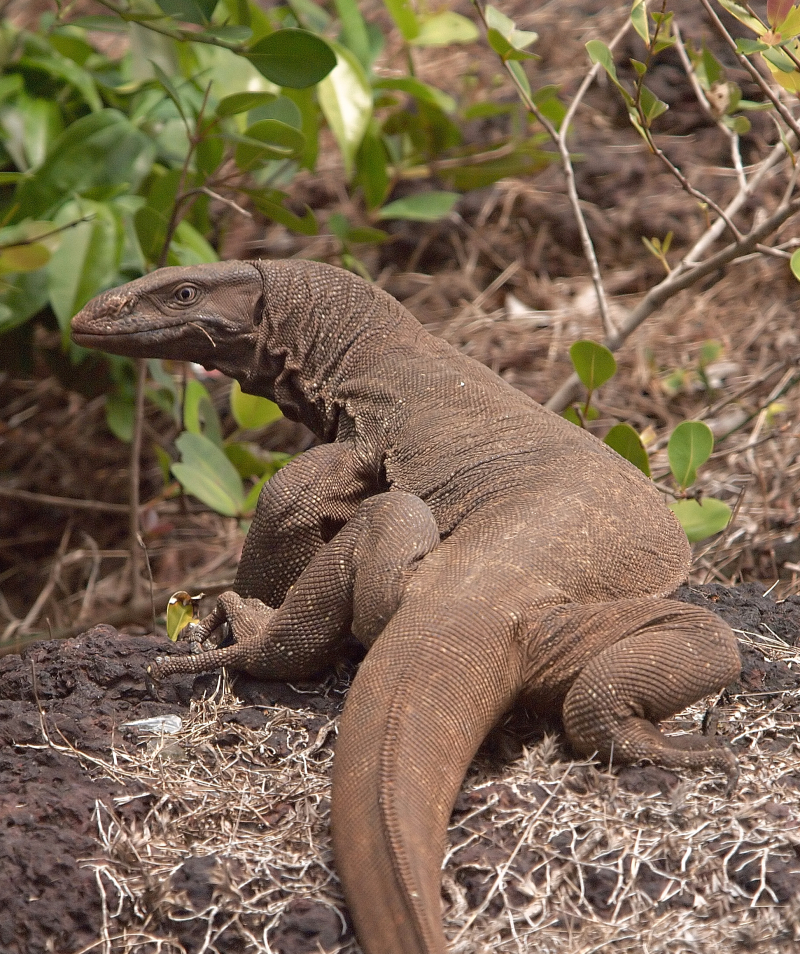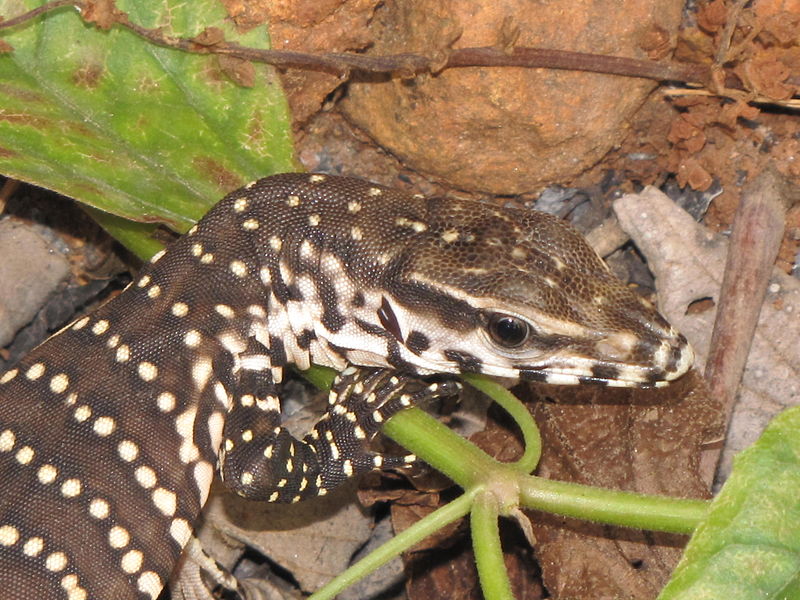Distinguishing features
Males are generally larger than females. Young monitor lizards are more colourful than adults. Young have a series of dark crossbars on the neck, throat and back. The belly is white, banded with dark crossbars and are spotted with grey or yellow (particularly in the eastern part of the range). On the dorsal surface of young monitors, there are a series of yellow spots with dark transverse bars connecting them. As they mature, the ground colour becomes light brown or grey, and dark spots give them a speckled appearance. Hatchlings of nebulosus tend to have a series of backward-pointing, V-shaped bands on their necks. (Wikipedia)
Size
- Up to 175 cm (Length of specimen)
Synonyms
Distribution and habitat preferences
The species ranges from Iran to Java, among the most widely distributed of varanid lizards. It is found in river valleys in eastern Iran, Afghanistan, Pakistan, India, Nepal, Sri Lanka, Bangladesh and Burma. The subspecies Varanus bengalensis nebulosus, the clouded monitor, occurs in southern Burma, Vietnam, Cambodia, Thailand, Malaysia, Sumatra, Java and the Sunda Islands. They have not been confirmed on Sumatra, and have been found to be absent from the Andaman Islands.
The species is distributed mainly in the lower elevations, and is found both in dry semiarid desert habitats to moist forest. They are often found in agricultural areas, and are mainly found below 1500m altitude. (Wikipedia)
Diet
Large adults may ascend vertical tree trunks, where they sometimes stalk and capture roosting bats. Their normal prey consists of beetles, grubs, orthopterans, scorpions, snails, ants and other invertebrates. Vertebrate prey is comparatively rare, and includes frogs, fish, lizards, snakes and rodents. They sometimes feed on dead animals. In areas where livestock are common, they often visit dung, where they forage for beetles and other insects. (Wikipedia)

